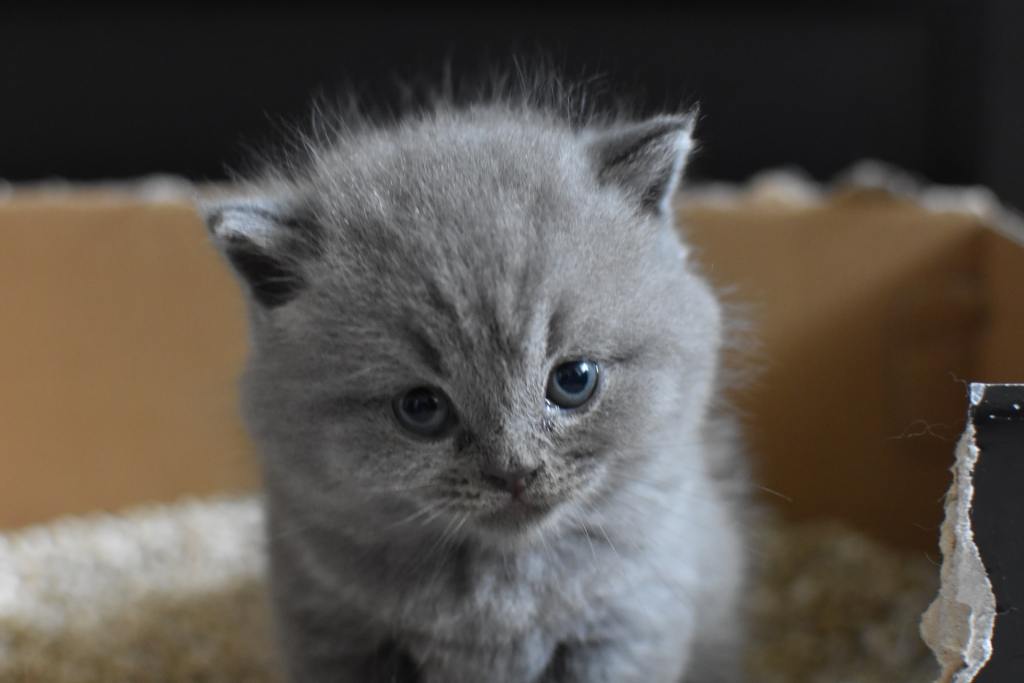When you bring home a new kitten, you’ll have many lessons to teach her. One important lesson is how to use a litter box. Understanding how to litter-train a kitten can ensure that you’re prepared for the task, that you have all the items that you need, and that you’ll give your kitten a positive introduction to the litter box. Before you bring home a kitten, brush up on your litter box training skills. The process should go more easily as a result, and you can help make your kitten’s transition into your home a smooth one.
Time your training right
It’s important to understand when to start litter box training kittens so you can time your training appropriately. When kittens are very young, their mothers lick them to stimulate them to go to the bathroom, so they can’t be litter box trained at that time. Once kittens reach 4 weeks old, you can start to introduce litter box training.
If you adopt a kitten, chances are that kitten has already been introduced to a litter box. You may need to reinforce those habits but might not be introducing the litter box from scratch.

Get the right litter training supplies
To litter-train your kitten, you’ll need multiple litter boxes, and it’s important that those boxes are appropriately sized. Look for a box that features a low enough front that your kitten can easily get into and out of it. Be sure not to put the box up on a shelf or other object that will make it more challenging for your kitten to access. While covered boxes can help conceal the area, many cats aren’t comfortable going into them. Instead, look for a simple litter box — there’s always time to try out different styles later.
You’ll also want to buy plenty of litter. Clumping litter isn’t ideal for kittens since it can potentially absorb water in their stomachs if ingested. Instead, look for a basic litter that has minimal dust. You may need to experiment with different litter types to see which your kitten prefers.
Introduce your kitten to the litter box
When you’re ready to start litter training, you’ll need to introduce your kitten to the boxes. Show her where each litter box is and put her into a box after she has a meal or wakes up from a nap.
Your kitten may start pawing through the litter on her own, or she may become interested if you play with the litter a little and show her that it can be moved around.
As you start introducing the boxes, make sure that you minimize other items around them, like carpeting and rugs. It’s best if your litter boxes are placed on flat floors, like tile, that aren’t tempting surfaces for your kitten to use as a bathroom. Keep the boxes easy to access, and make sure you place a box on every level of your home.
Keep boxes appealing
To encourage your kitten to use the litter boxes, keep them clean and appealing. Try to scoop them every time your kitten uses them, and be sure to add some clean litter to keep the boxes fresh and smelling good. You may need to experiment with litter depth. Generally speaking, two to three inches of litter should suffice, but you’ll also find that different cats develop different preferences.
As your kitten ages and gets used to using the litter box, it’s not as important to scoop the box after every use. Instead, you can focus on scooping the box once a day. Make sure that you thoroughly clean the box at least once a week. You may need to do these cleanings more often if you have a multi-cat home or if your cats are highly particular about their litter boxes.

Be patient and praise
Litter box training takes time, so you’ll need to be patient with your kitten. You can help the process along by rewarding her for using the litter box. For this to be effective, give your kitten a treat that she enjoys immediately after she uses the litter box. Consider quietly watching your kitten’s activities after she wakes up from a nap or eats to see if you can reward her for using the box.
It’s also important not to punish your kitten if she has an accident outside the litter box. Instead, thoroughly clean up the accident and focus on praising your kitten and rewarding her when she does use the litter box.
Hopefully, the process of litter box training your kitten goes smoothly and easily. If you start to run into trouble, then reevaluate the position of the litter boxes and the types of boxes and litter that you’re using. Some kittens can be very particular, so you might need to experiment with different setups before you find the arrangement that works best for your kitten. With a little time and patience, your kitten should be able to learn to reliably use the box. If you try multiple box arrangements and still run into trouble, then consider taking your kitten to the vet just to make sure there isn’t a physical issue causing her behavior.


